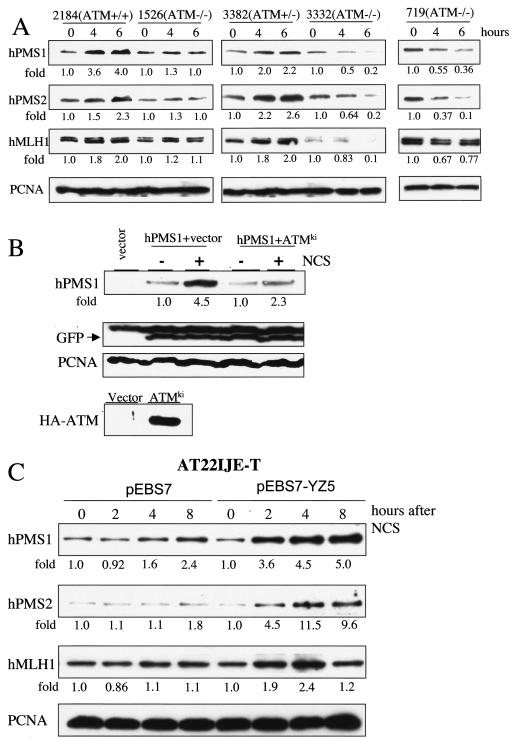FIG. 3.
ATM mediates the induction of hMLH1, hPMS1, and hPMS2 accumulation in response to DNA damage. (A) Several human lymphoblastoid cell lines with the indicated ATM genotypes were treated with adriamycin (1 μM). hMLH1, hPMS1, and hPMS2 proteins were assayed by Western blot analysis. (B) Induction of hPMS1 in response to DNA damage requires ATM. 293T cells were transfected with pcDNA3- HA-hPMS1 and pGFP along with pBJ-1-HA-ATMki or an empty vector. The cells were then treated with NCS (300 ng/ml) for 5 h. Transfected hPMS1 was detected with an hPMS1-specific antibody. The expression of transfected GFP serves as a control of transfection efficiency. PCNA immunoblotting was performed to ensure equal levels of protein loading. Expression of transfected HA tagged-ATMki protein was confirmed by immunoprecipitation with HA beads followed by immunoblotting with ATM antibody (bottom panel). (C) ATM-deficient human AT22IJE-T fibroblasts, stably transfected with pEBS7 (an empty vector) or pEBS7-YZ5 (carrying FLAG-tagged wild-type ATM cDNA) (46), were treated with NCS (300 ng/ml). The expression of MutL proteins was detected by Western blot analysis. The intensity of each immunoblot signal was quantified by densitometry. The relative intensity compared to that of the untreated sample is shown below each panel.

